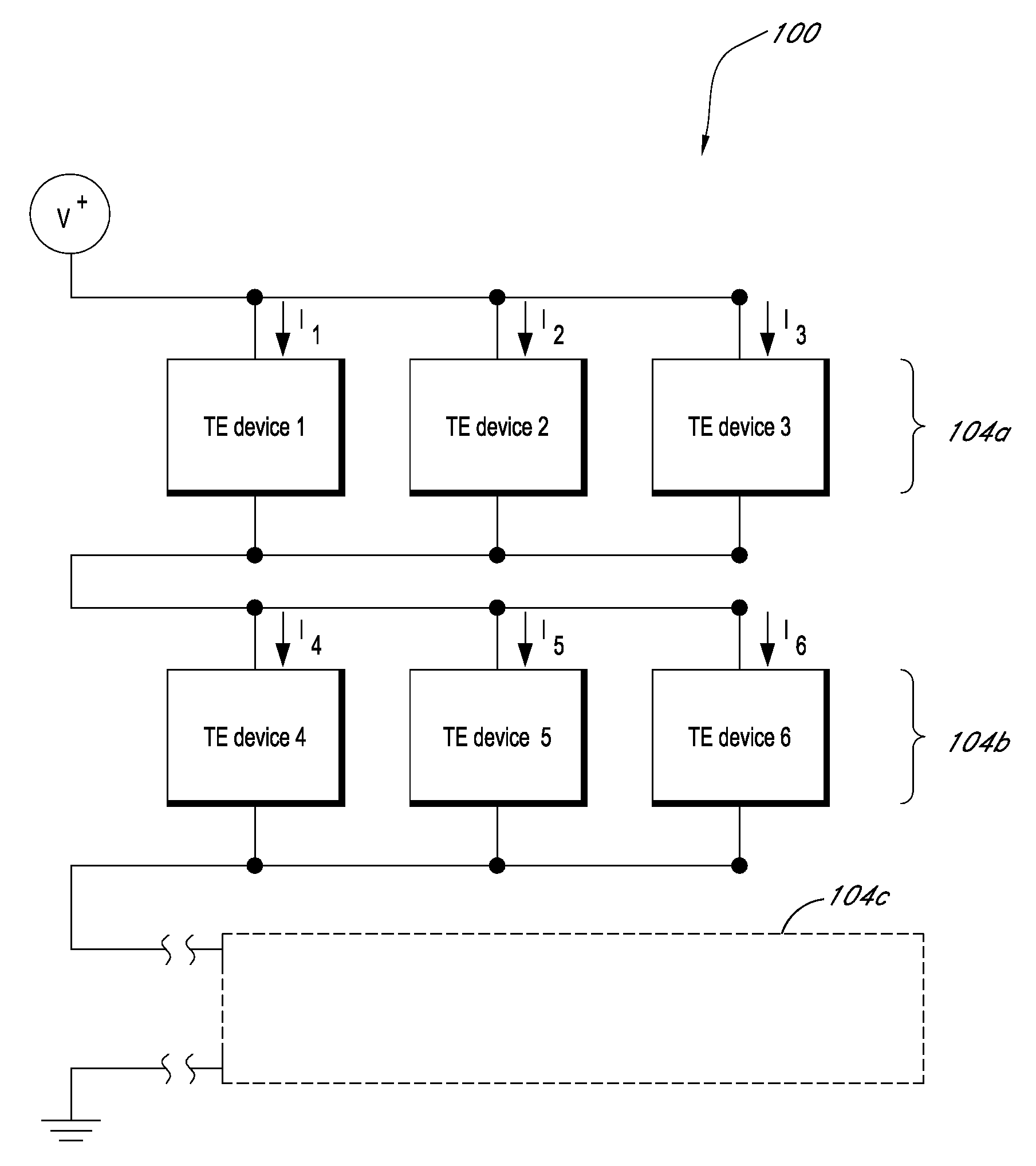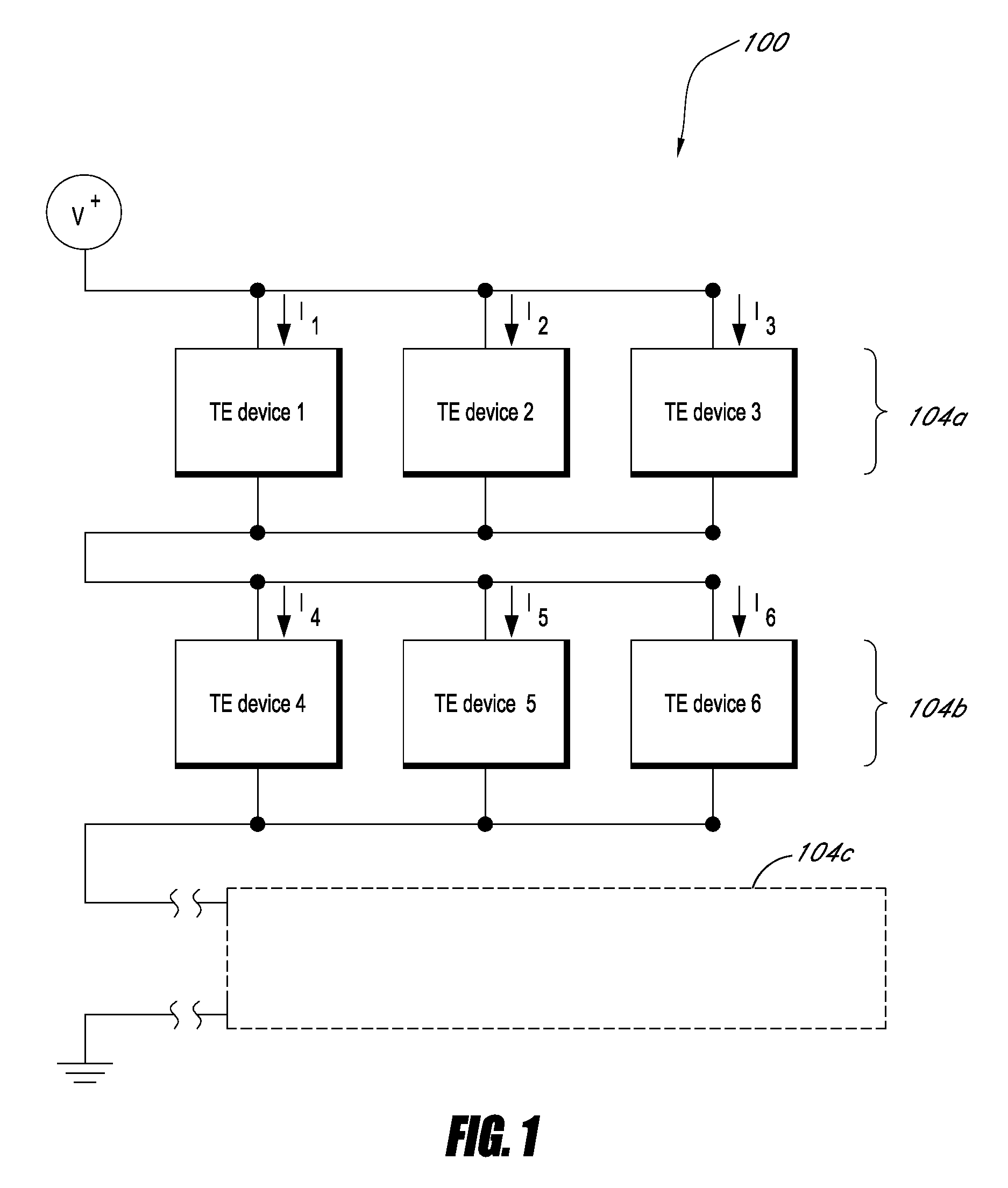Battery Thermal Management System
a thermal management system and battery technology, applied in secondary cell servicing/maintenance, batteries, cell components, etc., can solve the problems of battery life significantly decreasing, high-performance batteries exhibiting reduced performance, and possible damag
- Summary
- Abstract
- Description
- Claims
- Application Information
AI Technical Summary
Benefits of technology
Problems solved by technology
Method used
Image
Examples
Embodiment Construction
[0023]Battery thermal management systems (BTMS) can be used to control temperatures and monitor conditions of batteries and arrays of batteries to prevent battery failure and / or safety related failure. A BTMS can improve the overall conditions of battery operation by both managing the thermal environment and also being sufficiently reliable so that overall system performance is not degraded. For example, a BTMS may not reduce overall system reliability and not increase system operating cost by not including significant additional possible failure mechanisms to the system. Furthermore, the systems can be environmentally friendly and not contain materials that emit greenhouse gases such as refrigerants.
[0024]A BTMS includes at least one battery or battery array. In certain embodiments, a battery thermal management system can be used to both heat and cool batteries and / or battery arrays. For example, the battery thermal management system can be integrated with the at least one battery,...
PUM
| Property | Measurement | Unit |
|---|---|---|
| charging temperatures | aaaaa | aaaaa |
| temperature | aaaaa | aaaaa |
| electrical | aaaaa | aaaaa |
Abstract
Description
Claims
Application Information
 Login to View More
Login to View More - R&D
- Intellectual Property
- Life Sciences
- Materials
- Tech Scout
- Unparalleled Data Quality
- Higher Quality Content
- 60% Fewer Hallucinations
Browse by: Latest US Patents, China's latest patents, Technical Efficacy Thesaurus, Application Domain, Technology Topic, Popular Technical Reports.
© 2025 PatSnap. All rights reserved.Legal|Privacy policy|Modern Slavery Act Transparency Statement|Sitemap|About US| Contact US: help@patsnap.com



